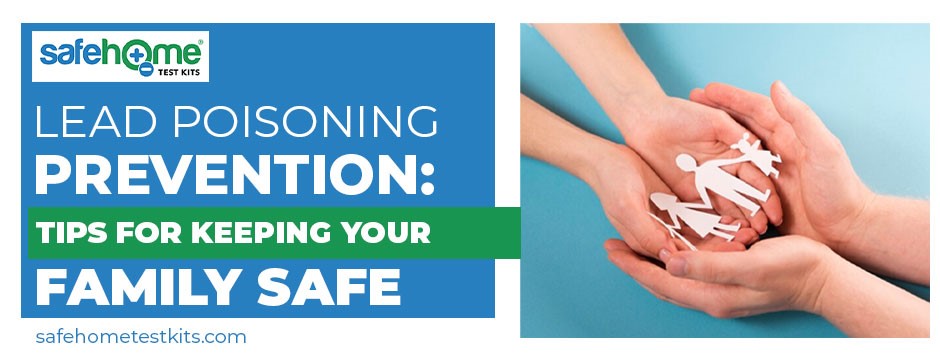
Lead poisoning is a silent threat that can affect individuals of all ages, especially children. Exposure to lead can lead to severe health issues, making lead poisoning prevention crucial for the well-being of your family. In this comprehensive guide, we will explore the dangers of lead exposure, how it can happen, and, most importantly, provide practical tips to keep your family safe from lead poisoning.
What is Lead Poisoning?
Lead poisoning occurs when lead accumulates in the body over time, typically from exposure to lead-containing materials or products. Lead is a highly toxic substance affecting various organs and systems, including the brain, nervous system, and kidneys. Children are particularly vulnerable to lead poisoning, as their growing bodies absorb lead more readily than adults.
Common Sources of Lead Exposure
Understanding where lead exposure can occur is essential for effective prevention. Some common sources of lead exposure include:
- Paint: Lead-based paint, often used in older homes, poses a significant risk. When the paint deteriorates, chips, or turns into dust, it can be ingested or inhaled.
- Dust and Soil: Lead from paint or other sources can contaminate household dust and soil, making it a source of exposure, especially for children who play on the ground.
- Water: Lead pipes or plumbing fixtures can leach lead into drinking water, particularly in older homes with outdated plumbing systems.
- Toys and Imported Goods: Some toys, jewelry, and imported goods may contain lead, posing a risk to children who may come into contact with them.
- Occupational Exposure: Certain occupations, such as construction, renovation, and battery manufacturing, can lead to occupational lead exposure. Workers in these industries should take precautions to prevent lead poisoning.
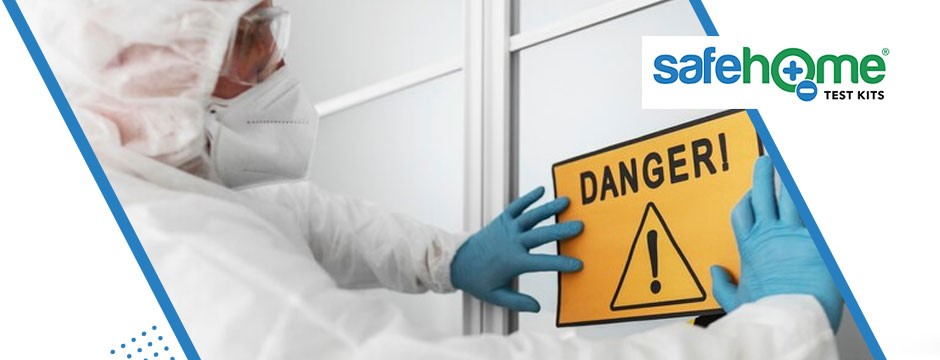
The Dangers of Lead Poisoning
Lead poisoning can have serious consequences for both children and adults. The effects of lead exposure may include:
- Cognitive and Behavioral Issues: Children with lead poisoning may experience learning disabilities, decreased IQ, and behavioral problems.
- Physical Health Problems: Lead exposure can lead to anemia, kidney damage, and damage to the nervous system.
- Developmental Delays: Lead poisoning can cause developmental delays and affect a child's overall growth.
- Behavioral and Emotional Problems: In both children and adults, lead poisoning can lead to irritability, mood swings, and even depression.
Tips for Preventing Lead Poisoning
In the Home
-
- Lead-Safe Renovations: If you plan to renovate an older home, hire professionals trained in lead-safe work practices. This includes proper containment and cleanup to prevent lead dust from spreading.
-
- Regular Cleaning: Dust and soil in and around the home can contain lead particles. Regularly clean and dust your home using damp cloths and mops to prevent lead dust from becoming airborne.
-
- Replace Lead-Based Paint: If your home has deteriorated lead-based paint, consider having it safely removed or encapsulated by professionals.
-
- Use Cold Water for Drinking and Cooking: If you have lead pipes or plumbing, use cold water for drinking and cooking. Hot water is more likely to leach lead from the pipes.
-
- Frequently Wash Hands and Toys: Encourage children to wash their hands and toys regularly, particularly if they've been playing outside in the soil.
During Renovations
-
- Use Lead-Safe Practices: If you're renovating, follow lead-safe practices, including proper containment, personal protective equipment, and thorough cleanup.
-
- Avoid Dry Sanding: Dry sanding can create lead dust that is easily inhaled. Wet sanding and scraping are safer methods.
-
- Seal Off Work Areas: Isolate the renovation area from the rest of the home to prevent dust from spreading.
In the Garden
-
- Test Soil: If you have a garden, consider testing the soil for lead if your home is in an older area with a history of lead-based paint usage. You can make adjustments based on the results.
-
- Cover Bare Soil: If the soil in your yard contains lead, consider covering it with grass, mulch, or gravel to reduce direct contact.
-
- Wash Homegrown Produce: If you grow your fruits and vegetables, wash them thoroughly to remove any potential soil contaminants.
The Importance of Regular Testing
Regular testing is a critical part of lead poisoning prevention. Consider the following:
- Blood Lead Testing: Children should be tested for lead exposure, especially if they live in or frequently visit homes built before 1978 or in areas with high lead exposure risks.
- Home Lead Testing: It's a good idea to test your home for lead, especially if it was built before 1978. Testing for lead in paint, dust, soil, and water can identify potential sources of exposure.
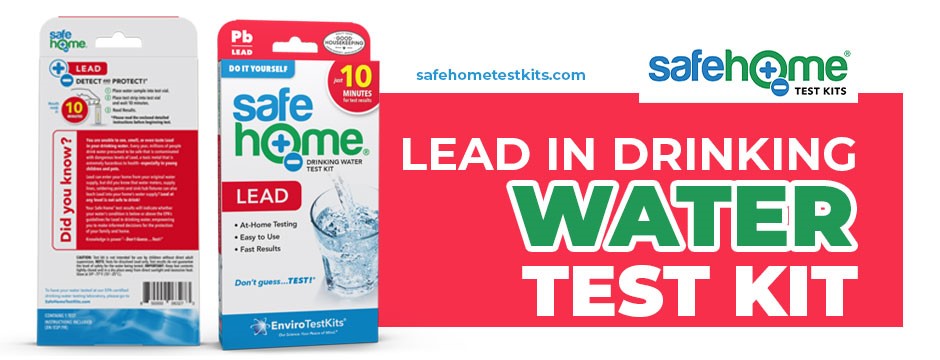
Lead In Drinking Water Test Kit
Concerns about lead contamination in drinking water are growing, so Safe Home® offers a DIY At-Home Lead in Drinking Water Test Kit to empower you with quick and accurate results. This user-friendly kit stands out as the most sensitive do-it-yourself lead water test kit available today, capable of detecting lead levels as low as 3.8 parts per billion (ppb).
The prestigious Good Housekeeping Seal sets our product apart, a testament to its quality and effectiveness. This single test kit focuses on dissolved lead in your drinking water, providing clear and visible results within 10 minutes. This at-home lead-in-water test kit is a breeze, delivering straightforward test results that indicate whether your drinking water's condition is below or above the 3.8 ppb (parts per billion) detection level.
Lead Test Swabs
The hidden dangers of lead contamination can affect your family through everyday items in your home. To safeguard your loved ones, Safe Home® offers DIY Lead Test Swabs, providing a quick and straightforward solution for lead detection.
Our Do-It-Yourself Lead Test Swabs empower you to take control of your family's safety by allowing you to test various surfaces in and around your home easily. Whether painted walls, wood, plastic, metal, children's toys, or furniture, you can gain instant results in 30 seconds. This knowledge is invaluable, enabling you to make informed decisions about your living environment and take necessary corrective actions promptly.
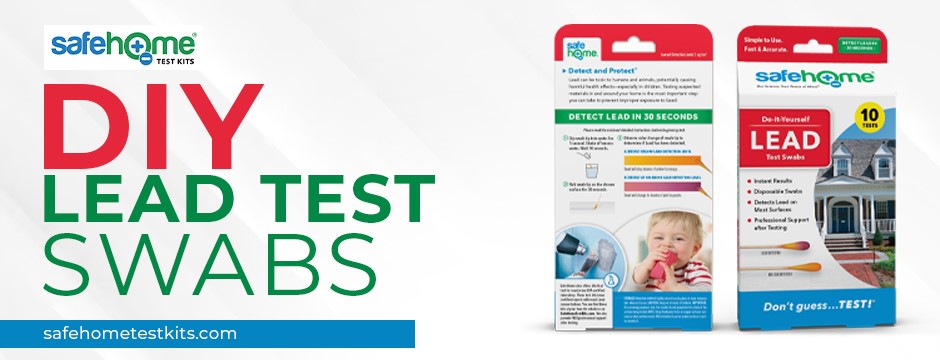
Conclusion
Lead poisoning is a preventable health hazard that can have long-lasting and severe consequences, particularly for children. By understanding the sources of lead exposure and implementing the tips for lead poisoning prevention outlined in this guide, you can protect your family from the dangers of lead.
Awareness and regular testing are key components of a successful lead poisoning prevention strategy. You can create a safe and lead-free environment for your loved ones with proper precautions. Don't wait until it's too late – take proactive steps to keep your family safe from lead poisoning. Your family's health and well-being should always be a top priority.
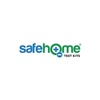
No comments yet